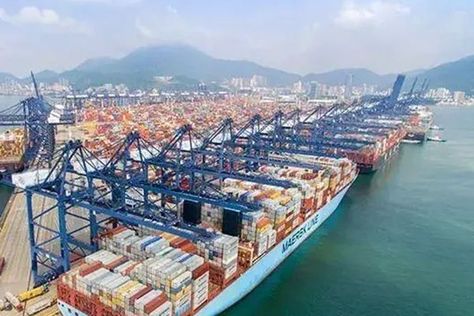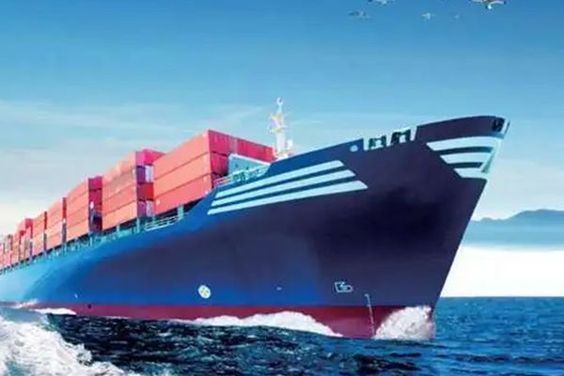Shipping containerization and parcel delivery services is the process of packing cargo in standardized, lightweight containers that are loaded on trucks and transported to a port. Shipping containerization has made transporting cargo more efficient and cost-effective, making it an increasingly popular method of shipping goods worldwide.
Shipping containerization began in the mid-20th century as a way to reduce the amount of cargo that had to be carried on ships. With the advent of larger ships and increased fuel efficiency, shipping containerization became an even more popular option. Today, shippingcontainerization is used for everything from consumer goods to large commodities.
Shipping containerization is one of the most efficient ways to move goods around the world. Standardized containers make it easy for transportation networks to move products efficiently and ensure that they arrive at their destinations intact. Additionally, shippingcontainerization reduces environmental impact by reducing the amount of waste that is generated during transport.
Sea shipping has been a mainstay of the world economy for centuries, facilitating the movement of goods and people around the globe. However, maritime security concerns have increased in recent years as terrorist groups have targeted vessels and ports.
There are several ways to secure sea shipping. One approach is to use advanced maritime surveillance technologies to monitor vessels and ports. Another is to use port security procedures such as physical barriers and CCTV cameras to identify potential threats. Vessels can also be armed with defensive weapons, such as cannons or missiles, to protect them from attack.
The safety of sea shipping is a top priority for governments around the world. Violent attacks on vessels and ports can have serious consequences for the global economy, so it is important that we continue to vigilant in protecting these critical infrastructure assets

An overview of the different ports and terminals used for sea shipping.
Sea shipping is an important mode of transportation just like also the air shipping, connecting countries around the world. Ports and terminals are important locations where ships dock to load or unload cargo.
Ports are located on coasts or harbors, while terminals are located inland. Ports are used for loading and unloading cargo, while terminals are used for ship maintenance and repairs. The three main types of ports are seaports, inland ports, and special purpose ports.
Seaports are located on coasts or in seaside towns. They include major centers such as New York City, Los Angeles, Shanghai, London, and Dubai. Seaports handle all types of cargo including coal, oil products, automobiles, and cereals.
Inland ports are located in large cities such as Chicago, Miami, Houston, Dallas-Fort Worth, Vancouver (Canada), Port Arthur (TX) , Seattle Tacoma , Boston Logan Airport , Melbourne Docklands . Inland ports have the advantage of being near population centers so they can handle a large volume of cargo quickly. Inland ports also handle less expensive transportation than seaports due to their proximity to highways.
Special-purpose ports include military bases and airports as well as commercial seaports that handle specific types of cargo such as iron ore exports from Australia or limestone from Brazil . These specialized ports often require a longer time to load or unload cargo.
Sea shipping is one of the oldest forms of transportation on the planet. It has been used to move goods from one place to another for centuries, and itu2019s still an important part of the global economy. In this article, we will explore some of the biggest benefits of sea shipping and how it can benefit your business. We will also discuss some of the challenges that businesses face when shipping products by sea, and what you can do to overcome them. So whether you are a small business or a multinational corporation, sea shipping is an essential part of the global economy. Let us help you take advantage of its many benefits.

The history of sea shipping which became popular until now in delivery service is a long and complex subject that spans many centuries. The development of maritime technology has been a pivotal part of human history, and the seafaring industry has played a major role in the prosperity and growth of many countries.
The earliest form of sea transportation was probably using rafts made of logs or planks. These methods were dangerous and slow, and it was not until the development of sailing ships that trade between different parts of the world became feasible. Early sailing ships were not very efficient, and it took many years for them to become popular. However, by the 18th century, sailing ships had evolved into powerful vessels that could travel vast distances at high speeds.
During the late 19th century, steamships began to become popular as they were much more efficient than sailing ships. Steamships didn't require any hull support, which made them much less expensive to operate than sailing vessels. This period also saw the development of oil-fired steam engines, which made steamships even more powerful.
Currently, sea shipping is still one of the most important forms of transportation in the world. The container industry has revolutionized shipping by making it possible to transport large quantities of goods in a small amount of space.

Types of Ships
When it comes to maritime shipping, there are a variety of types of ships that can be used. These include tankers, bulk carriers, container ships, and passenger ships.
Tankers are the most common type of ship in use today. They are designed to transport oil and other cargo across the ocean. Tankers can hold a lot of fuel, so they are able to make long trips between ports.
Bulk carriers are similar to tankers, but they are designed to transport large loads of goods across the ocean. Bulk carriers usually have a much larger capacity than tankers. This means they can transport more cargo at once.
Container ships are another common type of ship in use today. They are typically smaller than other types of ships, but they can handle a lot more cargo. container shipping are often used to transport products between different parts of the world.
Passenger ships are designed for passengers only. These ships usually have a smaller capacity than other types of ships. This means they aren't as good at transporting large loads of cargo or products. However, passenger ships often offer better amenities for passengers, such as restaurants and cabins
The maritime industry is a global industry that involves transporting goods and people by sea. The maritime sector employs about 3.5 million people in over 150 countries and generates approximately $2 trillion in annual revenue. The maritime industry is divided into three main areas: shipping, shipping services, and maritime businesses.
Shipping is the process of transporting goods by sea.A international shipping transport goods by ocean, river, or other bodies of water. Maritime businesses include shipbuilders, ship operators, port operators, freight forwarders, and marine insurance companies.
Shipping services provide transportation for express delivery and passengers between ports around the world. Shipping services include container shipping, bulk shipping, cruise ships, and ferry service between islands.
Maritime infrastructure includes ports and harbors, boatyards and marinas, navigational aids such as lighthouses and buoys, and shipbuilding yards. Maritime infrastructure helps to connect markets with each other and facilitates trade.